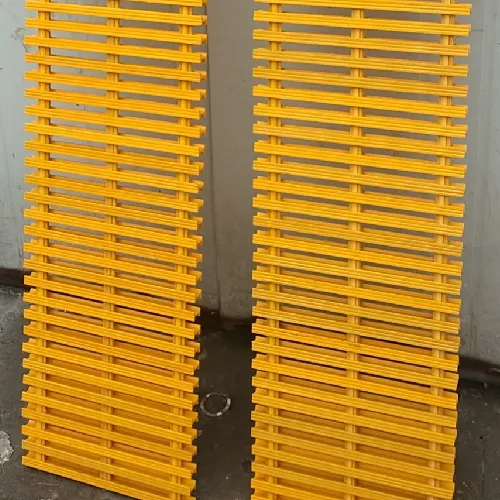loading...
- No. 9, Xingyuan South Street, Dongwaihuan Road, Zaoqiang County, Hengshui, Hebei, China
- admin@zjcomposites.com
- +86 15097380338
- Welcome to visit our website!
grp sectional tank
Understanding GRP Sectional Tanks A Comprehensive Overview
Glass Reinforced Plastic (GRP) sectional tanks have become increasingly popular in various industries due to their versatility, durability, and cost-effectiveness. These tanks are made from glass-reinforced plastic, a composite material that combines polyester resin and glass fibers, creating a structure that is strong yet lightweight and resistant to corrosion. This article delves into the features, advantages, applications, and installation processes of GRP sectional tanks.
Features of GRP Sectional Tanks
GRP sectional tanks are manufactured as modular panels, allowing them to be assembled on-site according to the specific needs of the installation. These panels can be customized in size, shape, and internal configuration, making them suitable for a variety of water storage applications. The modular design also allows for easy transportation and assembly, making them particularly useful in areas that may be challenging to access.
The tanks feature a smooth inner surface, which minimizes the risk of bacterial growth and sediment accumulation. Additionally, they can be equipped with various fittings, such as inlet and outlet pipes, access ladders, and manholes, depending on user requirements. GRP tanks can hold a wide range of substances, including potable water, wastewater, chemicals, and oils, making them highly versatile.
Advantages of GRP Sectional Tanks
One of the primary advantages of GRP sectional tanks is their corrosion resistance. Unlike traditional steel tanks, which can rust and degrade over time, GRP tanks do not corrode, ensuring a longer lifespan and reducing maintenance costs. This feature is particularly beneficial for applications in harsh environments or where water quality is critical.
Moreover, GRP tanks are lightweight, making them easier to handle and install than heavier materials like concrete or steel. The lightweight nature reduces transportation costs and simplifies construction processes, as less heavy machinery is required for installation.
Another significant benefit of GRP sectional tanks is their cost-effectiveness. Due to their long lifespan and low maintenance requirements, they can provide significant savings over time. Additionally, the modularity of the tanks allows for scalable solutions users can start with a smaller tank and expand as their needs grow.
Applications of GRP Sectional Tanks
grp sectional tank

GRP sectional tanks are widely used in various industries, including water treatment, agriculture, construction, and firefighting. In the municipal water sector, they serve as storage solutions for drinking water, ensuring a reliable supply for communities. Their smooth interiors help maintain water quality by inhibiting the growth of bacteria and algae.
In agriculture, these tanks are capable of storing large volumes of irrigation water, helping farmers manage water resources efficiently. Their ability to hold chemicals also makes them suitable for managing fertilizers and pesticides, contributing to effective agricultural practices.
In construction, GRP sectional tanks are utilized for temporary site water storage or for storing runoff water. Their lightweight design simplifies transport to construction sites, where they can be quickly deployed.
Furthermore, GRP tanks play a critical role in firefighting applications. They can be used as water storage solutions in remote areas where reliable water sources are scarce, ensuring that emergency services have access to sufficient water in urgent situations.
Installation Process
The installation of GRP sectional tanks is typically straightforward, thanks to their modular design. The basic steps involve site preparation, assembly of the panels, and ensuring proper waterproofing and sealing of joints. Since the tanks can be assembled on-site, they are particularly advantageous in locations where pre-fabricated installations are impractical.
Before assembly, it is essential to prepare a level foundation that can support the tank's weight when filled. Panels are then connected using bolts and seals to ensure water-tightness. Once assembled, the tanks can be integrated with plumbing and other systems, completing the installation process.
Conclusion
In conclusion, GRP sectional tanks are an innovative solution for various storage needs across multiple industries. Their corrosion resistance, lightweight construction, and adaptability make them a preferred choice for water and wastewater storage, agriculture, and emergency services. As industries continue to seek efficient and sustainable storage solutions, GRP sectional tanks stand out as a practical choice for modern applications.
-
Transform Your Spaces with FRP Grating SolutionsNewsNov.04,2024
-
The Versatility and Strength of FRP RodsNewsNov.04,2024
-
The Excellence of Fiberglass Water TanksNewsNov.04,2024
-
The Benefits of FRP Grating for Your ProjectsNewsNov.04,2024
-
Elevate Your Efficiency with FRP Pressure VesselsNewsNov.04,2024
-
Welcome to the World of FRP Pressure VesselsNewsOct.12,2024
-
Unveiling the Future of Filtration: Why FRP Filter Vessels are a Game ChangerNewsOct.12,2024
